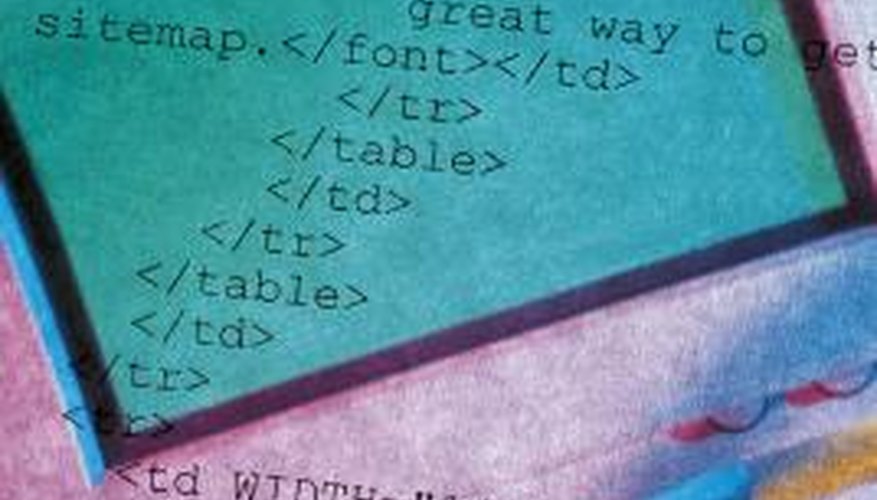Dreamweaver is a "What you see is what you get" (WYSIWYG) Web development application that allows users to create comprehensive websites without having to write HTML code. Though it supports HTML, as well as many other languages (such as PHP, Perl and JavaScript), it can be completely operated through a simple point-and-click interface. This is a benefit and a curse as it encourages people not to learn code. Other disadvantages include a hefty price tag and confusing interface that's difficult to master. Plus, it takes up a lot of computer space.
Hefty Price Tag
Dreamweaver has a retail price of about £390, as of April 2011, which is hundreds of dollars more than similar programs, such as Front Page and NVU. There are many free HTML editors available, as well, or one could just code a Web page or an entire website using Window's built-in text editor, Notepad.
Confusing Interface
Dreamweaver has a confusing interface that may seem intimidating to new users. Its tutorials feature only very basic information, and there are no help guides for more complicated topics. The toolbar and property windows are loaded with options. To become an expert at Dreamweaver, one needs to purchase a Dreamweaver guide and read it from start to finish, which is time consuming.
- Dreamweaver has a confusing interface that may seem intimidating to new users.
- Its tutorials feature only very basic information, and there are no help guides for more complicated topics.
Lack of Code
Dreamweaver's simple point-and-click interface encourages people, especially young students, not to invest in learning coding languages, such as HTML and PHP. Every thing in Dreamweaver can be accomplished with just the click of a mouse. Though that makes life easier up front, the Web designer fails to learn skills that are needed to advance. Furthermore, Adobe, which produces Dreamweaver, releases a new version every two to three years. Each iteration comes with a plethora of new features and options.
- Dreamweaver's simple point-and-click interface encourages people, especially young students, not to invest in learning coding languages, such as HTML and PHP.
Hard Drive Space
If one were just to write code in Notepad, it would take up almost no space at all. Dreamweaver requires 1.8 GB of hard drive space. In addition, each project can take up to hundreds of MBs of space, depending on how large it is.
